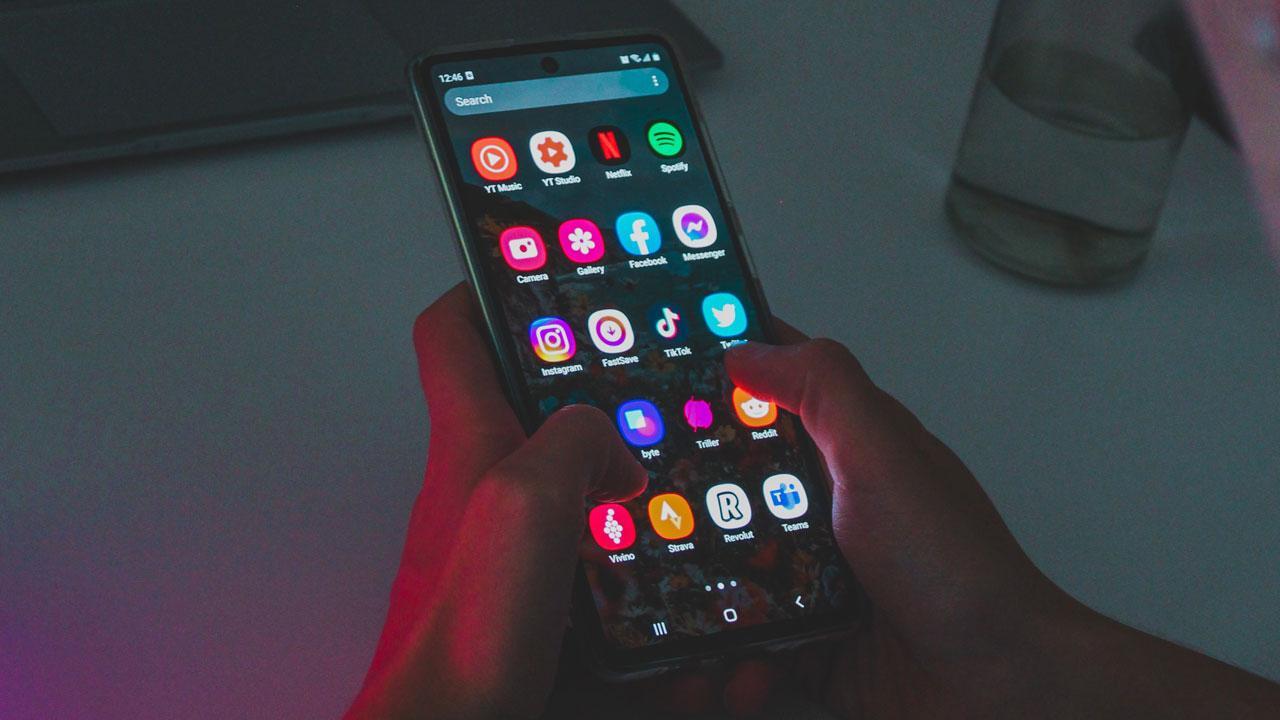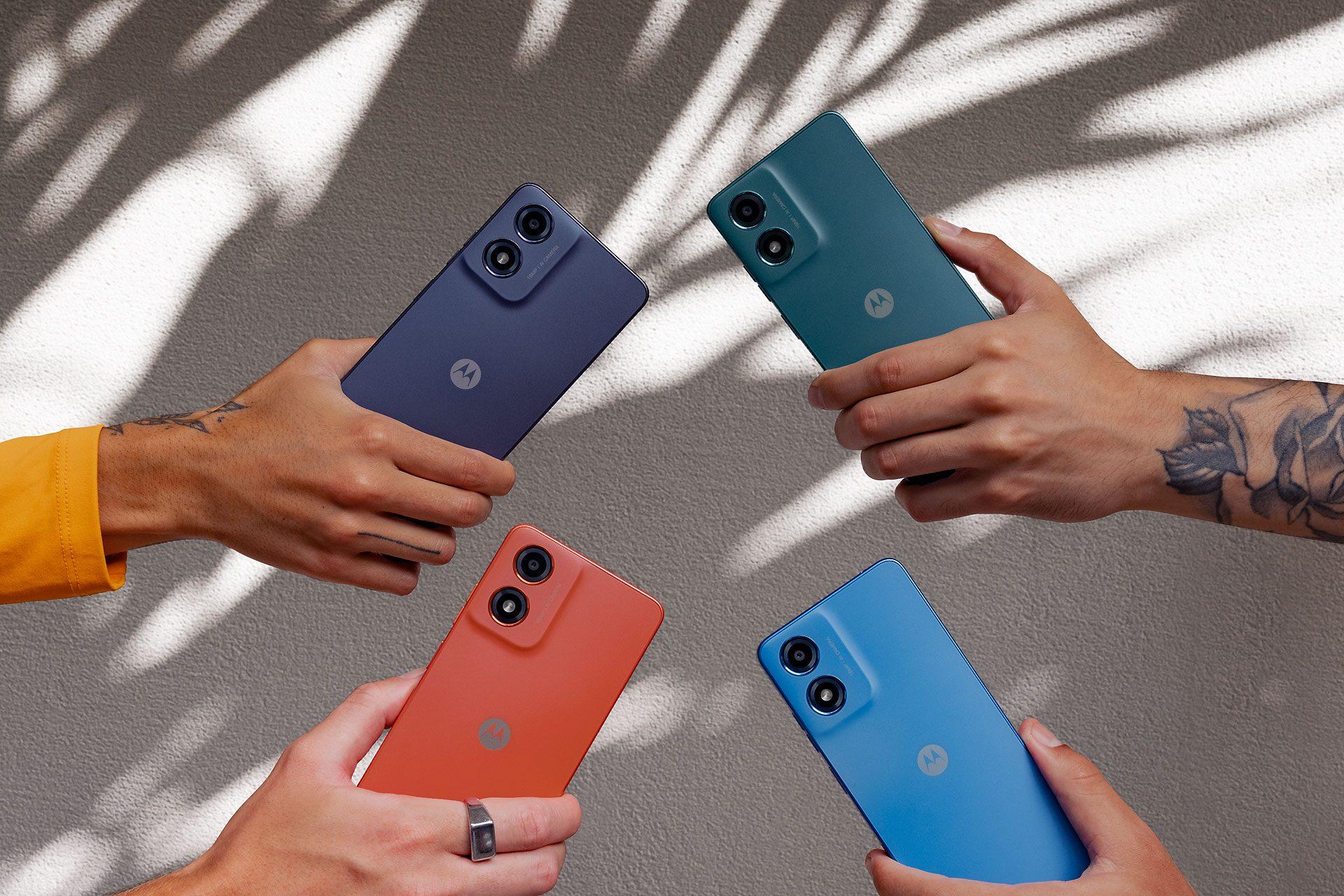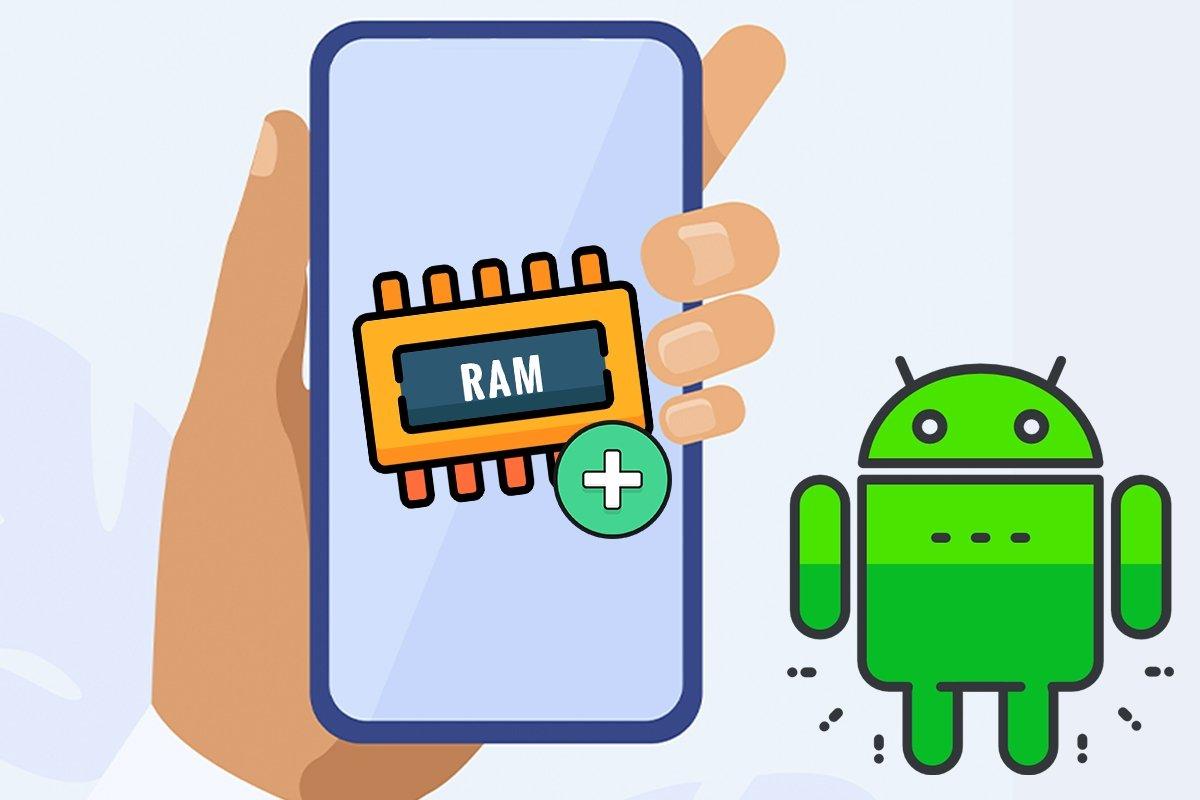- La Virtual RAM uses storage internal as a backup and does not replace physical RAM.
- It can improve multitasking on phones with low RAM, but it is slower and uses less storage.
- Available on many brands; activated in Settings (RAM Plus, RAM Boost, Memory Extension).
- Use it with enough free space and only occasionally; disable it if you don't see any improvement.

Your mobile Android It gets lazy when you open several apps at once? You may have heard of so-called virtual RAM or RAM expansion. This feature promises to boost multitasking by using part of the storage as if it were RAM., and it is reaching practically all manufacturers: Samsung, Xiaomi, OPPO, vivo, Motorola, Realme, among others.
The idea sounds like a dream: allocate a few gigabytes of storage to give the system a break when RAM runs out. But it's neither magic nor a substitute for real RAM., and it's important to understand what it does, when it contributes, its limits, and even its risks (including storage depletion). In the following lines, we explain it in detail, with real-life examples, activation routes, and compatible phones.
What is virtual RAM in Android?
Virtual RAM, also called RAM expansion or RAM expansion, is a system technique that reserves part of the internal storage to simulate additional volatile memoryWhen physical RAM is full, Android uses that “borrowed” space to hold temporary app processes and data.
Essentially, the phone creates a storage area that acts as a buffer for multitasking. The quantity available depends on the manufacturer and model., with typical figures ranging from 2 to 8 GB additional, although some systems allow more ambitious values.
It is important to underline that This extension does not replace real RAM, which is much faster and designed for temporary, high-speed access. Virtual RAM is a backup plan that can help, but it doesn't match the experience of having more physical RAM.
In recent years, as apps have grown in resource demands, Virtual RAM has been integrated as a native setting in many Android layers. This popularity makes it easy to find the option today on entry-level and mid-range phones, precisely where it often makes the most sense.

How it works and what it aims to solve
Physical RAM stores processes and data that are used immediately so that the system can respond without delay. When you open a lot of apps, play games, or edit videos, that memory can fill up., and the system starts closing background tasks or forcing reloads.
Virtual RAM comes into play to Make multitasking easier by keeping more apps aliveThe phone reserves a few gigabytes of internal storage (UFS/eMMC) and treats it as additional RAM space to store temporary data when the physical RAM is full.
The goal is to allow the user to switch between apps with less lag and, in general, withstand peak usage where the device would otherwise experience crashes or slowdowns. Therefore, it's especially useful on phones with 3, 4, or 6 GB of physical RAM.
The amount that can be added varies by brand and is sometimes scalable by the user (e.g., 1 GB, 3 GB, or a maximum allowed). Some manufacturers have even managed to double the effective RAM during occasional use., with systems that “borrow” storage temporarily.
It is important to remember that the content stored in RAM is volatile and is cleared upon reboot or as determined by the system. Virtual RAM does not change that temporary nature., but also expands the phone's operating range.

Does it really improve performance? Important nuances
It depends on the case. In real-world testing with an 8GB RAM phone, performing multiple tasks simultaneously (Twitch streaming, video editing, downloading files, music, etc.), Some improvement was noticed when switching between apps by enabling virtual RAM, especially when reopening applications that, without this support, would reload more frequently.
The improvement was not huge, which is logical given that you have enough RAM to start with. Where it is most noticeable is in modest devices that don't exceed 4 GB or that tend to be limited by heavy games and apps. In these situations, having a little extra RAM for peak storage can prevent stutters, crashes, and waiting.
Now, there is a clear counterpart: Internal storage is slower than RAMRelying too heavily on this "fix" can introduce minor delays, and on some models, the phone feels snappier by disabling the scaling and working only with the physical RAM.
In addition, this mechanism consumes storage space. If your phone is short on free gigabytes, virtual RAM can become a problem., because it reduces the space available for photos, videos and apps, and can worsen the experience if the system is stressed due to lack of space.
In short, virtual RAM is useful as a booster, but It is not a silver bullet nor does it guarantee the same performance as real RAM modules.If your phone already has plenty of RAM, enabling this feature will rarely make a dramatic difference.

Advantages and disadvantages in everyday life
Key benefits- If you use a lot of apps at once, you can keep more processes active, switch between apps with less overhead, and smooth out usage spikes. On devices with low RAM, The difference can be noticeable when multitasking.
Another practical advantage is stability. By having extra margin, the probability of unexpected closures decreases. caused by a lack of memory, especially when performing intensive tasks such as photo or video editing.
Relevant disadvantages: Speed. Storage memory, no matter how fast (UFS 2.x/3.x/4.0), doesn't match the latencies and bandwidths of RAM. This means that not everything will go “like a shot”, and some very demanding apps may notice this.
Another disadvantage is space. Virtual RAM "eats up" part of the internal storage. If you tend to be tight, you might want to reserve a large margin (for example, 10 GB free) to prevent the system from running out of space and starting to get even worse.
Finally, there is storage wear and tear. More frequent readings and, above all, frequent writings shorten the lifespan of flash memory., a point that should be kept in mind if you plan to use this function continuously.
What Google says about storage wear
The Android developer documentation is clear: storage is intended for persistent data (file system, application code, libraries, etc.) and not as a continuous swap space, since repeated writes can accelerate wear and shorten the life of the media.
Therefore, even if manufacturers offer the option and the system supports it, Google advises against relying on storage-based swapping as a primary solution. It's not that it can't be used, but you have to understand its cost and reserve it for when it's really worth it.
In practice, if you are going to activate virtual RAM, do it occasionally or moderately, and prioritize having enough free space so the system isn't under constant stress. If your phone already has plenty of physical RAM, it's probably not worth it.
Brands that offer it and representative models with virtual RAM
The feature was popularized by manufacturers like OPPO and vivo, and today Samsung, Xiaomi, Poco, Realme and Motorola also include it., especially in entry-level and mid-range models since 2021. Below is a review of representative models that have incorporated this feature.
OPPO
- Reno4 Pro 5G, Reno4 5G and Reno4 SE
- Reno3 Pro, Reno3 and Reno2 (Reno2 Z, Reno2 F)
- Reno Z
- Find X2 Pro, Find X2 and Find X2 Lite
- A92s, A72, A52, A32, A91
- A11 / A11x
- F17, F17 Pro and F15
live
- X60 Pro
- V21
- Y72 and Y52
Samsung
- Galaxy A52s and A52s 5G
- Galaxy z fold 3
Xiaomi
- 11T and 11T Pro
- Mi 11 and Mi 11i
- Mi 10, Mi 10 Pro and Mi 10 Ultra
- Mi 10T and Mi 10T Pro
- Redmi Note 10 5G and 10 Pro 5G
- Redmi Note 9 5G and 9T 5G
- redmi 9T
- Redmi Note 8
Poco
- F3
- F2 Pro
- X3 GT
Realme
- X50, X50 Pro and X50m
- X7, X7 Pro 5G and X7 Max 5G
- X3 and X3 SuperZoom
- X2 and X2 Pro
- XT
- 8, 8 5G and 8 Pro
- 7, 7i and 7 Pro
- 6, 6i and 6 Pro
- Narzo 20 pro
- Narzo 30 and 30 Pro 5G
- C12 and C20
- V3, V5 and V15
- Q2 and Q2 Pro
- Q3 and Q3 Pro
- GT, GT Neo, GT Flash, GT Master and GT Master Explorer Edition
Motorola
- Edge 20 and Edge 20 Lite
- Motorcycle G200 5G
- Moto G100
- Moto G50
The list evolves with each release, so use this as a guide. The quickest way to check compatibility is to check the settings of the device itself. or the official technical sheet of the model you are interested in.
How to enable virtual RAM according to the manufacturer
The option is usually found in Settings and may change names depending on the layer. These are the most common routes for popular brands, so you can locate it without getting lost.
Samsung (RAM Plus)
On compatible Galaxy devices, the upgrade appears as RAM Plus. Go to “Settings” > “Battery & device care” > “Memory” and you can activate the function or adjust the size depending on the model and software version.
Xiaomi (Memory Extension)
In MIUI, go to “Settings” and then “Additional Settings”. Find "Memory Extension" and enable or disable it as you prefer., being able to choose usual amounts (for example, 1 GB or 3 GB) or the maximum allowed.
Huawei (Memory Fusion)
En EMUI, go to “Settings” and tap “Additional Features.” Locate "Memory Fusion" and turn on the switch. The name may vary slightly depending on the version or region.
Motorola (RAM Boost)
Motorola calls the feature RAM Boost. Go to “Settings” > “System” > “Performance” > “RAM Optimization” and enables expansion. The company has extended this system to many ranges, including affordable Moto G models.
On specific Motorola models, if you have 4GB of RAM, RAM Boost can take you up to 8GB effective in times of need. And if you start with 8 GB, on certain models the temporary amount can increase to 16 GB.
Use cases: when it pays off and when it doesn't
If your phone has 3-4 GB of RAM and you tend to open multiple apps, upgrading may give you some breathing room. In these scenarios, multitasking improves and background crashes decrease., with a general feeling of somewhat greater fluidity.
It's also useful during peak times: playing heavy titles while chatting and listening to music, editing large photos, or browsing with multiple tabs. For that specific “squeeze”, virtual RAM can make a difference by keeping more processes ready.
It's not worth it if you already have a lot of RAM (8GB or more) and your usage is normal. The gain is usually marginal and you may notice the system is smoother with the feature disabled., especially on computers where storage is not particularly fast.
It also doesn't make up for it if you're short on space. Upgrading reduces the available internal memory And if the phone starts to run out of free gigabytes, overall performance can clearly suffer.
In any case, the ideal is to test it with your real use for a few days. If you feel that everything is going better, leave it; if not, deactivate it. and opt for other optimizations that do not wear down storage.
Good practices to take advantage of it without unnecessary risks
Keep space free. Allow a generous amount of storage (e.g., 10 GB or more) so that the system doesn't throttle when using virtual RAM. This also helps apps and updates run smoothly.
Avoid overuse. If you constantly rely on the extension for everything, You are probably forcing storage and advancing its wear. Use it as a booster, not as a permanent support.
Reduce background processes. Close apps you don't use, uninstall what you don't need, and Install “lite” versions when official alternatives exist that consume fewer resources.
Reboot from time to time. A reboot frees up resources, clears states and helps the system stay agile, with or without virtual RAM. It's a simple but effective tip.
Always update. With each patch or system update, Performance and memory management may improveKeeping your device up to date is key to taking advantage of any optimization.
Cases and examples by manufacturer
At Motorola, the RAM Boost feature has been expanded to many ranges, including popular models in the Moto G family. Its approach is to allow the phone to “borrow” storage when it needs it., temporarily multiplying the available RAM.
At OPPO and vivo, pioneers in this trend, some models allow flexible configurations. There are cases where a phone with 8 GB has been able to have up to 16 GB effective temporarily, making it much easier to keep more apps open.
At Samsung, RAM Plus is widely available across the Galaxy range. Activation is simple and the system manages this “buffer” transparently., without the user having to intervene other than to choose the size (if the model allows it).
On Xiaomi/Redmi/Poco, Memory Extension is integrated into the system settings and typically offers 1 or 3 GB increments, or the maximum supported by the device. In entry ranges it makes a difference when the physical RAM is saturated. with social networks, messaging, streaming and intensive navigation.
Technical limitations to keep in mind
Speed: Real RAM offers much higher latencies and bandwidths. Virtual RAM cannot replicate that speed., so don't expect the same performance jump as upgrading physical modules in a PC.
Persistence: Remember that the contents of RAM (physical or virtual) are temporary. It is cleaned on reboot or according to system management, so it doesn't affect your permanent data, but it also doesn't retain states indefinitely.
Compatibility: Not all models include the feature. It depends on the layer, the Android version and the policy of each manufacturer., and sometimes arrives as part of system updates.
Storage: The faster it is (e.g. UFS 3.x/4.0), the better experience you'll have. On devices with slow storage, the benefit may be smaller or even negative if the function is abused.
Wear: using storage intensively as swap memory increases write cycles and shortens lifespan from the middle. This is the great argument for using this function wisely.
How much magnification should you choose?
If your phone offers multiple levels, try a moderate increase (1-3 GB) and evaluate the change with your normal usage. Going to the maximum is not always synonymous with greater fluidity, and the sweet spot may be somewhere in the middle.
If you notice that with a moderate setting you can switch between apps more easily and there are no unexpected shutdowns, that's great. If your phone feels laggy or storage starts to run low, reduce the magnification or turn it off without fear.
Remember that virtual RAM is especially useful when physical RAM is short. If you rarely fill your RAM, you won't notice any major changes. simply by activating it.
As a guide, many users with 4GB of RAM find it useful to add 2-3GB virtual RAM. With 6GB, the improvement is more situational., and with 8GB or more, it is usually dispensable unless you multitask very intensively.
If you've made it this far, you're already clear on what's behind the RAM upgrade: A real help for phones with limited memory, with clear advantages in multitasking, but with technical limitations, space costs, and a potential impact on storage longevity. Use it when it's worth it, maintain a good margin of free gigabytes, and always prioritize overall system health.
Passionate writer about the world of bytes and technology in general. I love sharing my knowledge through writing, and that's what I'll do on this blog, show you all the most interesting things about gadgets, software, hardware, tech trends, and more. My goal is to help you navigate the digital world in a simple and entertaining way.